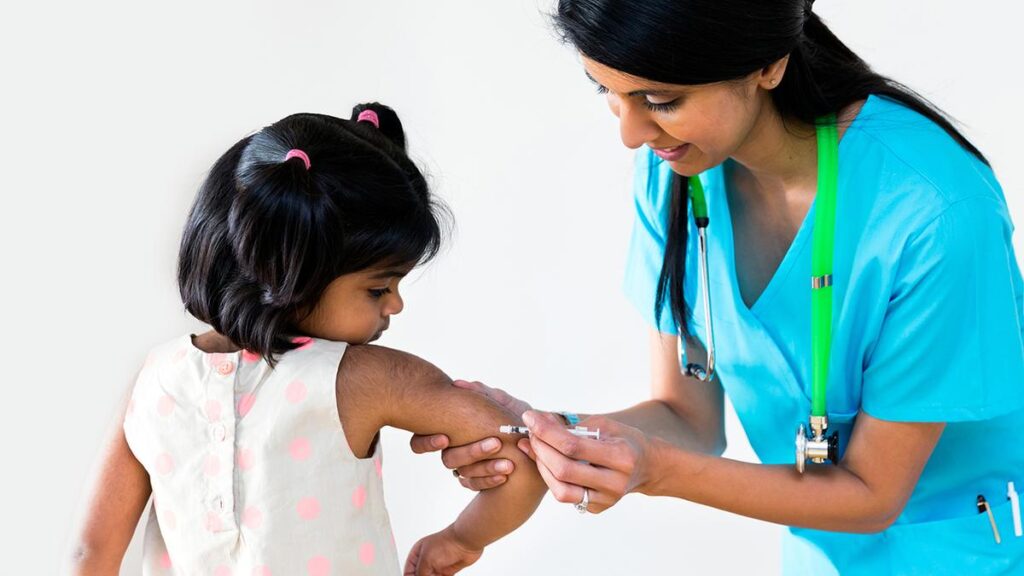According to the World Health Organization (WHO), diarrhoeal disease is the third-leading cause of death among children aged 1–59 months, with 4,43,832 global deaths under five and an additional 50,851 deaths in children aged 5–9 years annually. India bears a significant share of this burden, with 1.7 billion childhood cases each year, largely due to unsafe water and poor sanitation — issues affecting 780 million people without safe drinking water and 2.5 billion lacking improved sanitation.
Diarrhoea is also a leading cause of malnutrition, worsening children’s immunity. In India, rotavirus and E. coli are major risk factors, leading to severe dehydration and life-threatening complications. Prevention efforts include rotavirus vaccination, ORS (oral rehydration solution) and zinc therapy, and initiatives like Swachh Bharat Abhiyan, which aim to improve sanitation and reduce waterborne diseases.
The growing burden of diarrhoeal diseases in India
According to Vaikunth Ramesh, resident, Department of Paediatrics, RML Hospital, Delhi, India has among the highest incidence of diarrhoeal illnesses worldwide, with children under five experiencing an average of 2 to 2.3 episodes per year. This rate surpasses those seen in other low- and middle-income countries (LMICs), where the incidence typically ranges between 1 and 1.7 episodes annually. “Over a five-year period, this means a child in India could experience up to 10 diarrheal episodes, and there is an urgent need for intervention,” Dr. Ramesh said.
Rotavirus accounts for approximately 10–20% of diarrhoeal illnesses in children and tends to be more severe than other viral diarrhoeas, often leading to hospital admissions.
There are notable regional variations in the prevalence of diarrhoea across India, the WHO says. southern India reports lower incidence rates of rotavirus-related diarrhoea, largely due to better implementation of sanitation and hygiene practices compared to northern regions. States such as Uttar Pradesh, Bihar, Madhya Pradesh, and Rajasthan experience a higher diarrhoeal burden, primarily due to weaker sanitation infrastructure. While improved access to clean drinking water and increased hygiene awareness have helped reduce diarrhoeal cases in urban areas, rural regions continue to face significant challenges.
Recognising symptoms , first step to prevention and treatment
Recognising early signs of dehydration is crucial, as symptoms such as lethargy and excessive thirst indicate worsening dehydration. Since the virus has a short incubation period of under 48 hours, parents should monitor symptoms and seek medical help if dehydration signs such as lethargy, irritability, and decreased urine output appear. While mild cases can be managed at home with oral rehydration solutions and adequate feeding, hospitalisation may be required for severe dehydration.
Deepa Hariharan, senior neonatologist, Chennai, emphasised the importance of hydration in managing rotavirus related diarrhoael diseases. “Since antibiotics are ineffective against rotavirus, rapid hydration is the primary treatment to manage symptoms,” she says.
Oral Rehydration Therapy (ORT) is also an effective treatment for 90% of diarrhoea cases, yet only 50-60% of affected children in India receive ORT and zinc supplements. The use of zinc supplements has been shown to reduce the duration of diarrhoea by 25% and its severity by 30%, but awareness and consistent implementation remain a challenge, say doctors.
Expanding rotavirus vaccine coverage: progress and challenges
The rotavirus vaccine was introduced in the Universal Immunisation Programme of India in 2016. Since then, says Dr. Ramesh, there has been a significant reduction in rotavirus-related hospitalisations. Studies indicate that mortality due to rotavirus diarrhoea has dropped by 40-50% in regions where vaccination coverage is high.
India now provides three doses of the rotavirus vaccine at 6, 10, and 14 weeks of age. A 2024 mathematical modeling study conducted by National Centre for Disease Control confirmed a decline in antibiotic use for diarrhoeal diseases following the vaccine rollout, further underscoring its positive impact on public health.
Studies, including population-based research conducted by the Indian Council of Medical Research (ICMR) in Vellore, as well as similar studies in Africa, South America, and Mexico, have established the vaccine’s effectiveness.
India’s national immunisation schedule includes three doses of the rotavirus vaccine at 6, 10, and 14 weeks of age. This differs from the standard two-dose recommendation by vaccine manufacturers GlaxoSmithKline and Merck. The additional dose in India is necessary due to the concurrent administration of the oral polio vaccine (OPV), as OPV and rotavirus vaccines can interfere with each other.
The introduction of rotavirus vaccines has played a crucial role in reducing both the incidence and severity of diarrheal diseases, says Dr. Ramesh, adding that indigenous vaccine development efforts are also underway. “Bharat Biotech and Shanta Biotech are currently testing multivalent rotavirus vaccines targeting multiple strains, potentially enhancing vaccine effectiveness, he says.
Improving sanitation and hygiene for long-term prevention
Improvements in sanitation could prevent up to 60% of diarrhoeal deaths in India, states the WHO, highlighting the importance of addressing sanitation as a critical public health priority.
According to Vijayakumar T., consultant paediatrician and neonatologist at Prashanth Hospitals, Chennai, simple everyday hygiene practices can go a long way in preventing rotavirus infections, which spread through the fecal-oral route, often due to poor hygiene, contaminated food, and unsafe drinking water. “If left untreated, symptoms like severe diarrhea, fever, vomiting, and abdominal pain can lead to life-threatening dehydration,” he said.
He points out that there needs to be more focus on vaccine coverage. Following the introduction of rotavirus vaccination in 2016, there has been a noticeable decline in diarrhoeal diseases, particularly those caused by rotavirus, with studies indicating a reduction in rotavirus cases, antibiotic misuse, and deaths. Additionally, he emphasises that all infants should receive the vaccine before six to eight months, as they are highly susceptible to infections during this period.
Preventive measures such as exclusive breastfeeding for the first six months, proper hygiene, safe drinking water, and avoiding unhygienic food, could also go a long way, he says.
Published – April 04, 2025 11:35 am IST

